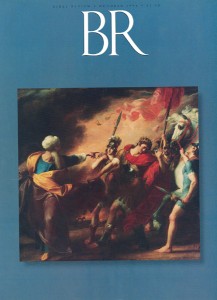A Political Christmas Story
Luke presents Jesus’ birth as a political message. But it is not the birth of an emperor that ushers in an era of peace: Rather it is the birth of a child in Bethlehem.

The Christmas story from the Gospel of Luke (2:1–21) is probably the best known text in the entire New Testament. It is read every year in Christian churches on Holy Eve or Christmas Day, often performed by Sunday school children and enlivened by hymns. The story is beautiful and romantic: Joseph and Mary come from Nazareth in Galilee in the midst of winter over the mountains of Judea to the little town of Bethlehem; the stable cradles the babe; the ox and donkey look on while shepherds gather by night with their flocks; peace is proclaimed on earth; angels sing on high and shepherds hurry to worship the child.
Unfortunately, all this overlooks the purpose of the story and the political impact it must have had when it was first written and told. Luke, certainly not an eyewitness of the events of the ministry of Jesus and a man who had little knowledge of the Holy Land, wrote his Gospel at the end of the first century C.E., probably during the reign of the emperor Domitian (81–96). From the beginning, Luke, who also wrote the Acts of the Apostles, composed his Gospel as a political tract in full knowledge of the imperial propaganda of his time.
Already a library member? Log in here.
Institution user? Log in with your IP address.

